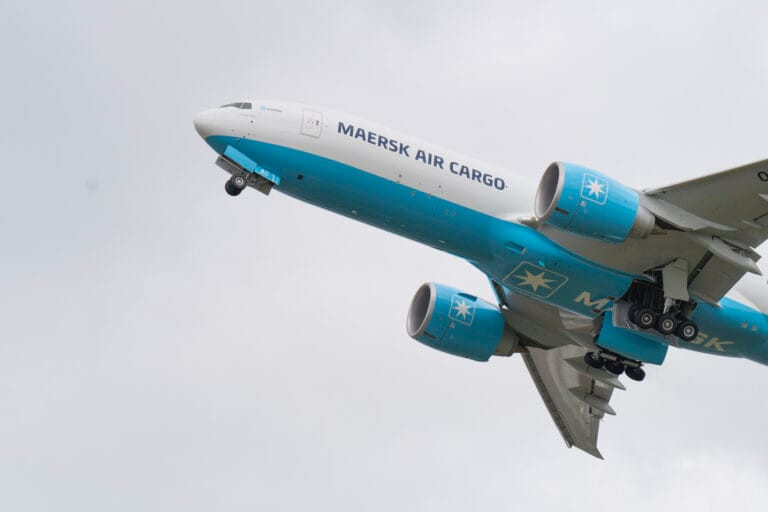There’s no single reason freight moves differently today – there are dozens. Conflicts, tariffs, weather, factory delays, and regulatory shifts now appear in the same week. For air freight operators, the response isn’t scale, but adaptability. At Maersk, that adaptability is increasingly baked into how the company defines its integrator model.
Built for volatility
“As you know, the world is extremely complex today. There are new things happening on a daily basis, whether it’s political, natural reasons or environmental,” said Kiran Raj Thazhathethil, Regional Head of Air Freight Product Management at Maersk. “And as air freighters, we have to move along with the needs of the market and the needs of the customers.”
That fluidity isn’t an abstract talking point; it’s operational doctrine. “Whether it’s changes in tariffs, whether it’s disruptions in the world because of the conflicts, or whatever it is, whatever the reason is, good and bad, we have to move along with it, right?” he said. “And yeah, that’s what we do.”
The company currently ranks as the 15th largest airfreight forwarder globally, a position that Kiran frames less as a headline, more as an outcome of its ability to absorb and respond to disruption.
“We have a large group of experienced professionals coming from different parts of the world, and we’re on top of this on a daily basis,” he added. “We move along with the needs of our customers. We move along with the needs of the world.”
Hybrid models, tactical capacity
Disruption doesn’t only affect demand. Capacity constraints and cost pressures continue to impact pure airfreight. The company’s growing investment in sea-air routing, leveraging hubs in Dubai, Singapore and Los Angeles, is a direct response to this.
“Sea air is a product that moves along with the market,” Kiran explained. “It gives our customers the benefit of better cost versus moving air freight from end to end. And of course, the transit times are a little slower than what air freight would provide, but there are multiple benefits that come out of it.”
This flexibility is one of the few advantages available to operators willing to build across modes. “We operate our own vessels, and we have our airfreight product that complements this product quite well,” he said. “It makes it a unique, quick, fast solution for any customer that’s looking for such a solution.”
Maersk operates dedicated freighter services on China-Europe-US lanes, including its Billund–Liège–US routing. While Kiran noted “there hasn’t been too much change on this product… in recent months,” he emphasised that freighter deployment remains tactical. “The operational changes that we have when needed are completely based on the needs of our customers.”
Growing under pressure
While disruption might be the default context for global logistics, customer expectations are moving in the opposite direction: toward precision. Kiran said this is visible across verticals, particularly time-sensitive sectors like automotive, tech, and manufacturing support.
“We have seen almost all sectors looking for time-critical services on and off depending on their needs,” he said. “We also see some ad hoc requests coming from the industrial sector where we can provide support on instances such as a part that is required for a factory to be up and running again.”
This demand, volatile as it is, isn’t going away. “There is constant demand throughout the year, throughout these sectors that I mentioned,” Kiran added.
Maersk is positioning itself to capitalise, not by focusing on any single lane, but by deepening its presence across sectors. “We see a lot of opportunities in import and export in Europe, throughout the world,” Kiran said. “There is not one particular region or lane or area that we are looking to grow in. It’s truly global.”
A key component of that expansion is industry specialisation. “We are starting to move into industries such as perishables,” he said. “You will also see Maersk air freight moving into verticals such as pharmaceuticals moving forward.”
Emissions are part of the equation
Even amid market instability, the company maintains a publicly stated goal of reaching net zero across all products by 2040, a target that will require action from every segment, including air.
“We have a sustainability product called ECO Delivery Air, which is a SAF-based product, which is available for all our customers,” Kiran explained. “It’s a product that lives today, which is actually being used by some of our customers already as we speak.”
The company’s framing of sustainability, like much else, is built into the integrator logic: not a separate programme, but a modular part of its offering.
“We’re actively involved and actively committed to reaching the goal that Maersk has, and supporting our global community of logistics to make the sustainability goal a reality,” Kiran said.





